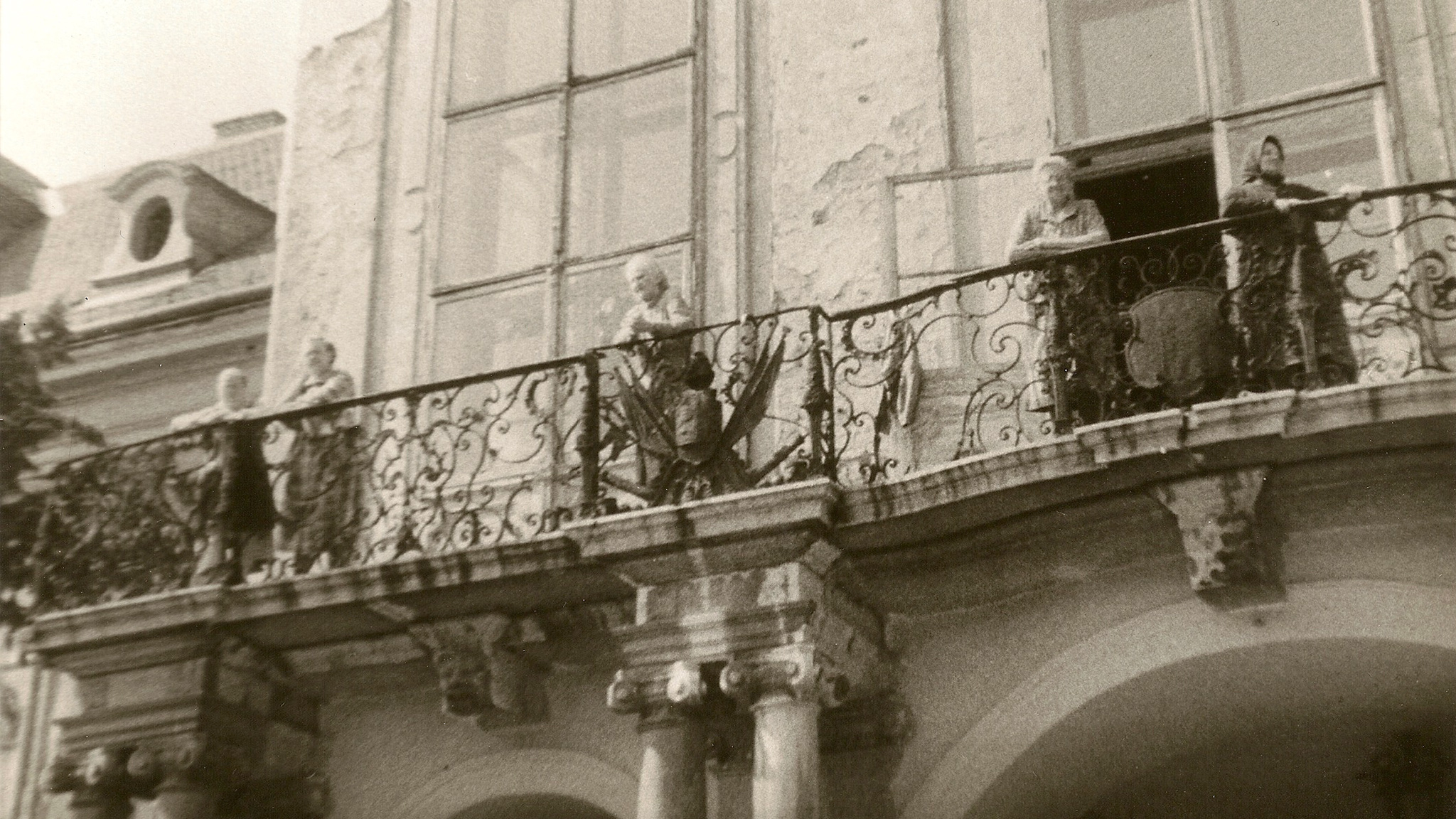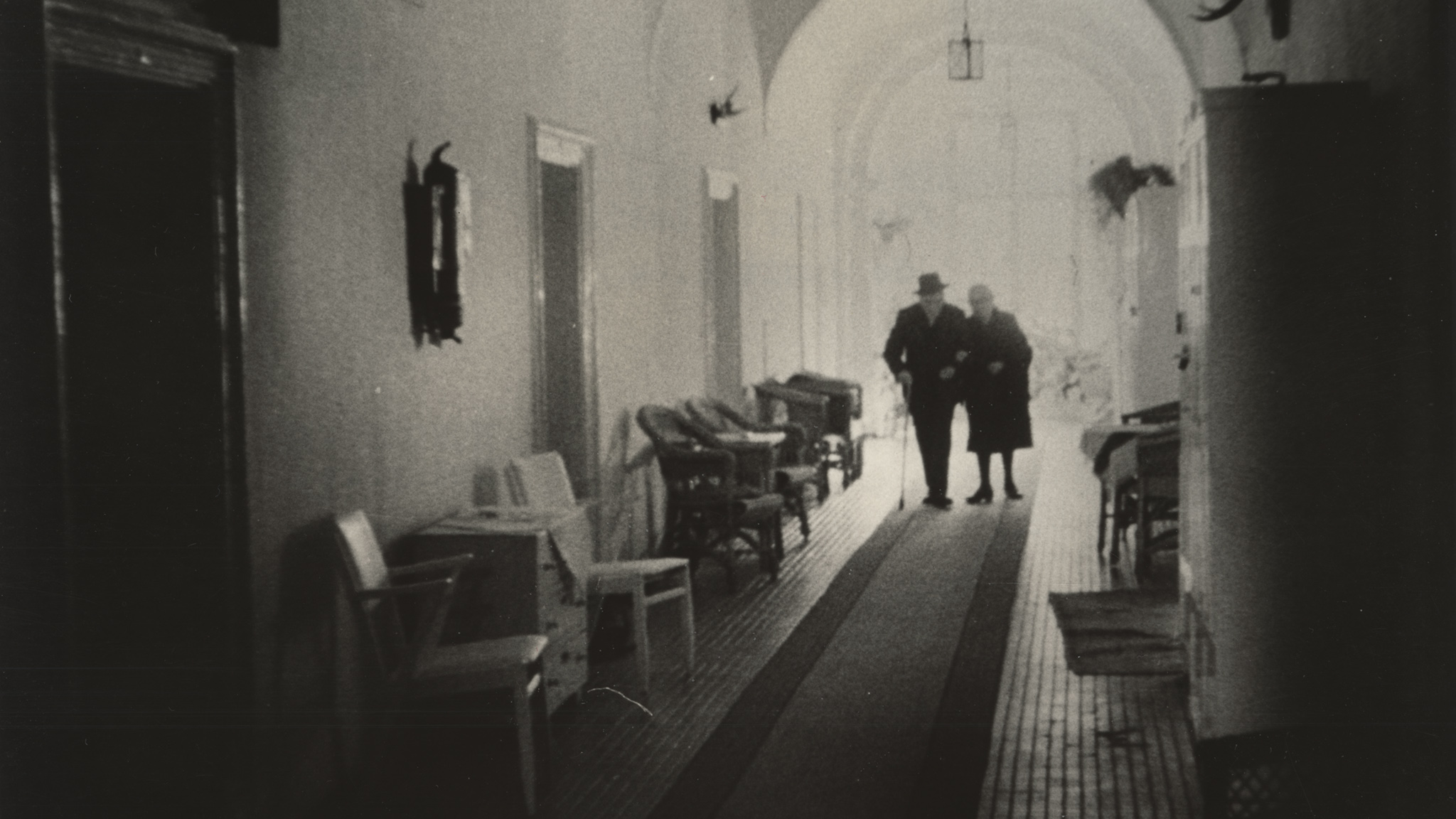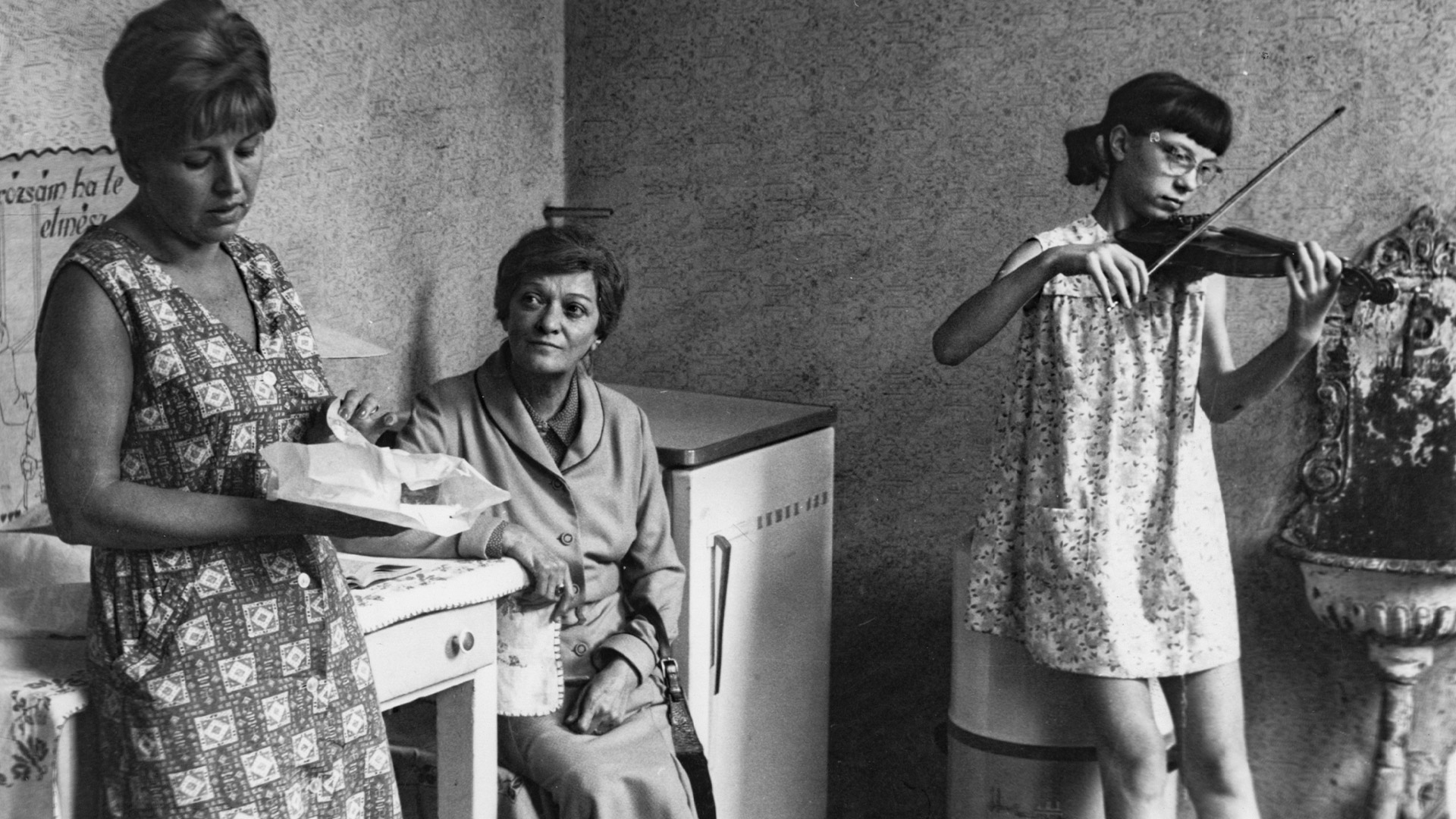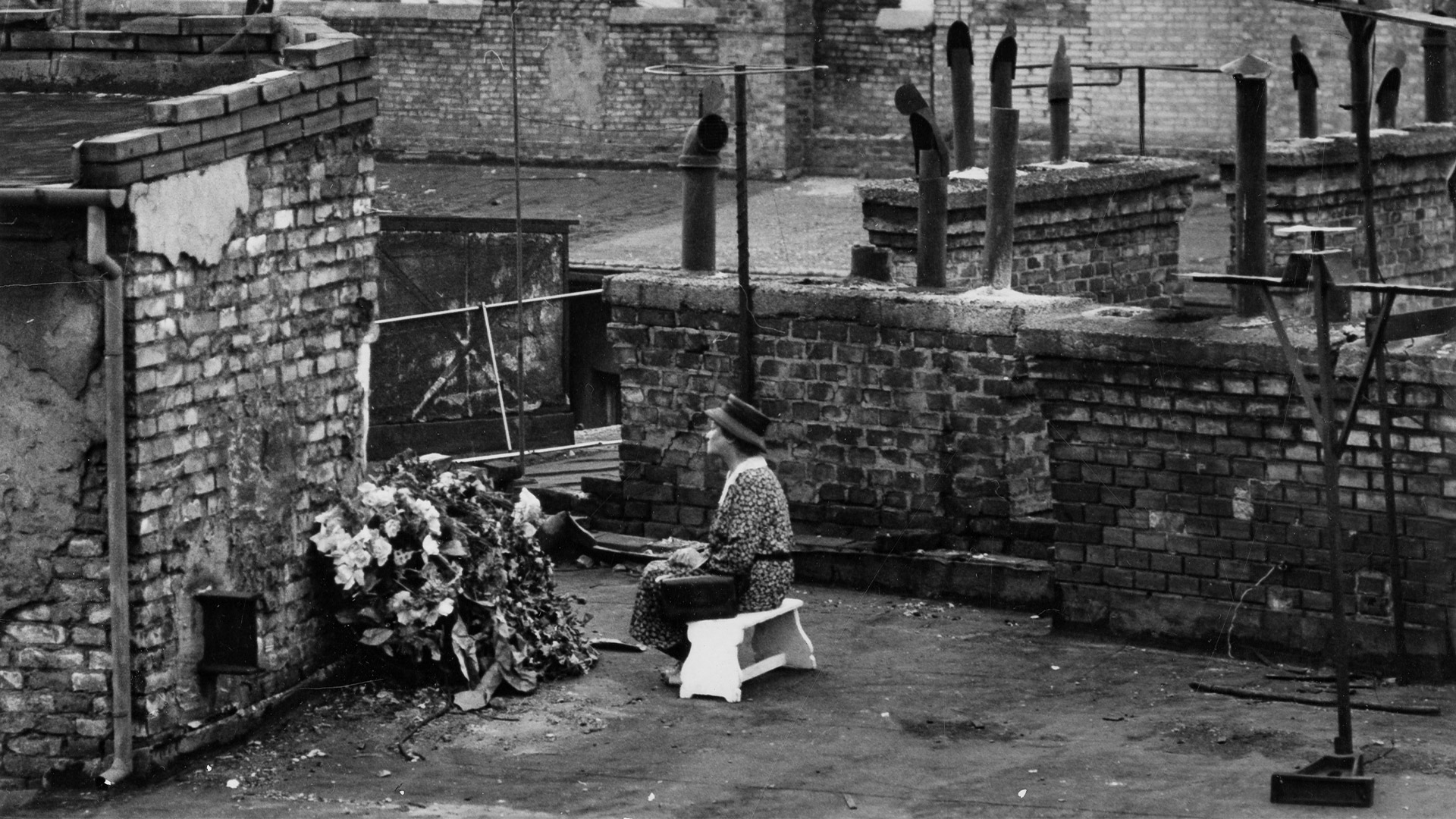HU 1966 | Director, screenplay: Judit Elek | Camera: István Zöldi | Editing: Éva Singer | Music: Valentin Bakfark | b/w | 35mm | 27 min | hungarian OV with english SUB | NFI – National Film Institute Hungary
"In 1966, I made the documentary KASTÉLYOK LAKÓI about five castles in Gödöllő that used to be the Habsburgs' royal residence. When I filmed there, parts of the building had been repurposed, converted into an old people's home and a Russian barracks. Everything was in a very run-down state. Dilapidated palaces in which old, confused people lived who still had their own opinions about the world and fateful stories to tell. […] Another castle had been turned into a school, including a hall where climbing walls were placed in front of baroque frescoes for gymnastics class. At the end of the film when I asked the children, who must have been around 7 years old, who used to live there, they answered: 'The counts.' And in response to my question: 'What happened to them?", the children replied: 'They all died a hundred years ago.'" (Judit Elek in conversation with Sabine Schöbel, Frauen und Film No. 68, 2016)


| Acronyms | |
|---|---|
| amer. | American English |
| b/w | Black and white |
| OV | Original version |
| SUB | Subtitles |
| +SUB | electronic live subtitling (below the image) |
| INT | Intertitles |
| Countries | |
|---|---|
| AT | Austria |
| FRG | Federal Republic of Germany (historic) |
| BLR | Belarus |
| DE | Germany |
| CAN | Canada |
| GDR | German Democratic Republic (historic) |
| EGY | Egypt |
| FR | France |
| GB | Great Britain |
| URY | Uruguay |
| BRA | Brasil |
| SWE | Sweden |
| UKR | Ukraine |
| PL | Poland |
| IDN | Indonesia |
| PRT | Portugal |
| HRV | Croatia |
| ECU | Ecuador |
| HUN | Hungary |
| AUS | Australia |
| IT | Italy |
| MEX | Mexico |
| IND | India |
HU 1969 | Director: Judit Elek Screenplay: Iván Mándy | Camera: Elemér Ragályi | Music: Vilmos Körmendi | Cast: Manyi Kiss, Éva Almási, István Dégi, Lucy Hamvay, Gyuri Korga, Ági Margitai, István Novák, Erzsi Pásztor | b/w | DCP | 76 min | hungarian OV with english SUB | NFI – National Film Institute Hungary
This film is half surreal feature film, half documentary. It deals with the precarious housing situation in Budapest in the 1960s. Elek's first feature film revolves around an “eccentric” older lady (Manyi Kiss) who lives in a Wilhelmian period building with a lift and loggia looking out on to a courtyard in Pest. Her father had lived in the flat. He had been a captain. Surrounded by his furniture, pictures and records, she dwells in another, better world. Her stories are reminiscences of journeys taken together to Constantinople, Madagascar and the “Kalahari islands“. An outside world in which making ends meet also gives the film a “crazy”edge: the funeral of Mr. Molnár, may he rest in peace, was held on the roof. All the while, a teenage girl plays the violin. An unknown man in the kitchen looks for dangerous electric currents. Under pressure from neighbours who wanted her to trade her large flat for a smaller one, the older lady goes to Marx-Square where an unofficial open air apartment market had been established. In the end, she sits on the terrace in the evening with a view of the garden. The change worked out well; the new place is rather good. (Sabine Schöbel, Aufbruch der Autorinnen, 2015)


| Acronyms | |
|---|---|
| amer. | American English |
| b/w | Black and white |
| OV | Original version |
| SUB | Subtitles |
| +SUB | electronic live subtitling (below the image) |
| INT | Intertitles |
| Countries | |
|---|---|
| AT | Austria |
| FRG | Federal Republic of Germany (historic) |
| BLR | Belarus |
| DE | Germany |
| CAN | Canada |
| GDR | German Democratic Republic (historic) |
| EGY | Egypt |
| FR | France |
| GB | Great Britain |
| URY | Uruguay |
| BRA | Brasil |
| SWE | Sweden |
| UKR | Ukraine |
| PL | Poland |
| IDN | Indonesia |
| PRT | Portugal |
| HRV | Croatia |
| ECU | Ecuador |
| HUN | Hungary |
| AUS | Australia |
| IT | Italy |
| MEX | Mexico |
| IND | India |
In cooperation with Filmkollektiv Frankfurt as part of the series ‘How long does a person live? The films of Judit Elek’






